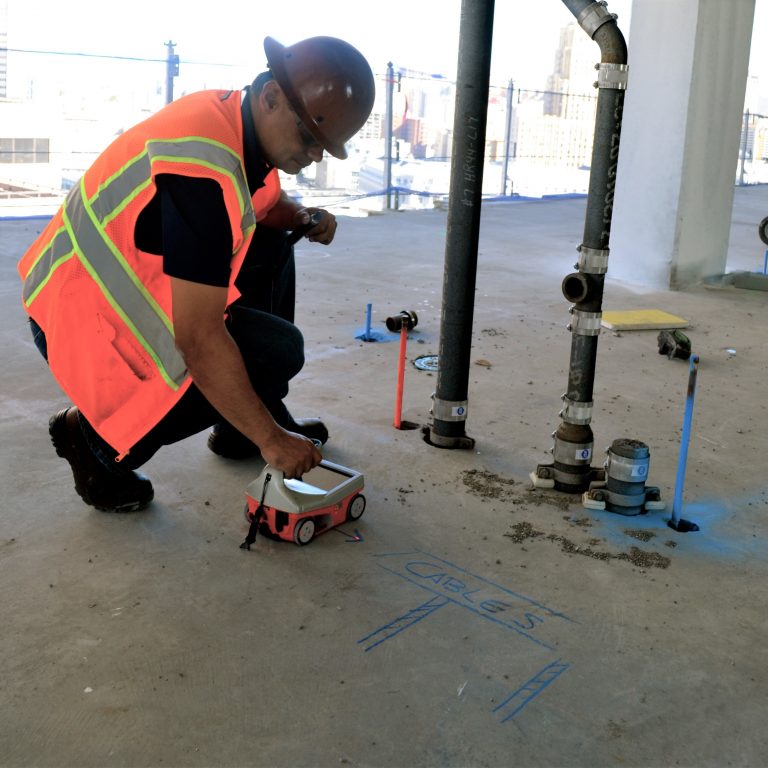In-Depth Insights into Concrete Scanning Procedures
In-Depth Insights into Concrete Scanning Procedures
Blog Article
Beyond the Surface: Leveraging Advanced Concrete Scanning Techniques for Unmatched Precision and Insight
Advanced concrete scanning strategies have actually arised as vital tools in this quest, using a glance under the surface to unveil a globe of vital understandings. By utilizing advanced technologies, professionals can reveal anomalies, evaluate the problem of concrete structures, and make educated choices that shape the training course of projects.
Importance of Advanced Concrete Scanning
The value of making use of sophisticated concrete scanning methods hinges on the unrivaled accuracy they provide for finding sub-surface anomalies and making sure structural honesty. By using advanced modern technologies such as ground-penetrating radar (GPR), electro-magnetic induction, and progressed sonar imaging, building and construction professionals can dig below the surface of concrete structures with a level of accuracy that far goes beyond typical inspection methods. Concrete Scanning. These strategies make it possible for the recognition of hidden dangers like rebar rust, voids, conduits, or post-tension cords that could compromise the security and safety and security of a framework over time
Additionally, progressed concrete scanning provides vital insights right into the general problem of a concrete aspect without the need for invasive actions, decreasing the threat of creating damage during the evaluation procedure. The capability to pinpoint the precise place and depth of prospective concerns allows for targeted repair work and upkeep, ultimately lengthening the lifespan of the framework and enhancing its efficiency. Essentially, the importance of innovative concrete scanning can not be overemphasized in the realm of building and facilities maintenance, where accuracy and reliability are paramount.
Kinds of Cutting-Edge Technologies

Abnormalities and Problem Discovery

Along with GPR, concrete scanning strategies like thermography and impact-echo screening are likewise effective in spotting abnormalities and flaws. Thermography uses infrared innovation to recognize variants in surface area temperature level, indicating prospective areas of problem such as delamination or moisture ingress. On the various other hand, impact-echo testing entails assessing acoustic reactions to discover gaps, splits, and various other issues within the concrete. By leveraging these advanced techniques, professionals can proactively attend to structural concerns, making certain the longevity and security of concrete frameworks.
Assessing Concrete Condition
Just how can designers accurately assess the condition of concrete frameworks to ensure their durability and safety? Various advanced concrete scanning methods are employed for this objective. Ground-penetrating radar (GPR) is generally utilized to evaluate the internal structure of concrete, discovering gaps, splits, and various other anomalies that may endanger its toughness.
Additionally, aesthetic assessment stays a basic component of concrete condition assessment. Designers visually take a look at the surface area for indicators of degeneration, such as spalling, splitting, or page discoloration. Combining non-destructive screening methods with aesthetic inspections enables a comprehensive assessment of concrete problem, making it possible for designers to recognize prospective concerns at an early stage and implement prompt upkeep or repair work. By leveraging these advanced methods, engineers can guarantee the long-lasting resilience and safety of concrete structures.
Enhancing Decision-Making Processes
In the realm of framework monitoring, maximizing decision-making procedures is imperative for ensuring the reliable maintenance and durability of concrete structures. Enhanced decision-making procedures in concrete management include using sophisticated scanning strategies to collect detailed information on the condition of frameworks. By leveraging innovations such as ground-penetrating radar and 3D imaging, stakeholders can make informed choices pertaining to repair, reinforcement, or substitute strategies.
These advanced scanning techniques provide important understandings right into the interior make-up of concrete, recognizing potential issues such as spaces, fractures, or rust that may not be visible on the surface area. This degree of thorough info enables positive upkeep preparation, reducing the risk of architectural failings and raising the total life expectancy of concrete frameworks.
Moreover, by including digital documentation and evaluation tools right into the decision-making procedure, stakeholders can track the development of concrete conditions gradually, making it possible for predictive maintenance techniques and optimizing source appropriation. Ultimately, the combination of sophisticated concrete scanning strategies improves decision-making procedures by providing unparalleled precision, understanding, and effectiveness in framework monitoring.
Conclusion
In conclusion, progressed concrete scanning techniques offer unrivaled accuracy and insight in detecting anomalies, problems, and assessing the problem of concrete structures. By leveraging sophisticated modern technologies, decision-making procedures can be improved, resulting in even more effective and informed options for maintaining and repairing concrete facilities. These techniques play a vital role in guaranteeing the security and durability of concrete frameworks, making them an indispensable device in the area of building and design.
Moreover, progressed concrete scanning gives invaluable understandings right into Full Article the total condition of a concrete aspect without the requirement for invasive procedures, minimizing the danger of creating damages during the assessment process - Concrete Scanning. Another innovative innovation is 3D X-ray scanning, which provides detailed photos of the interior structure of concrete, offering valuable details without the requirement for damaging testing. Additionally, Concrete Cover Meters are made use of to determine the additional reading density of concrete cover over reinforcement bars properly. Enhanced decision-making procedures in concrete administration include making use of innovative scanning methods to gather thorough data on the condition of structures.In conclusion, progressed concrete scanning techniques supply exceptional accuracy and understanding in detecting abnormalities, flaws, and assessing the problem of concrete structures
Report this page